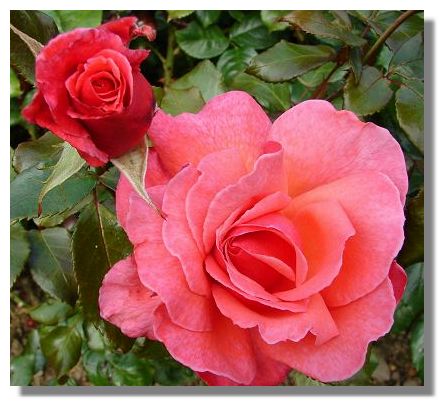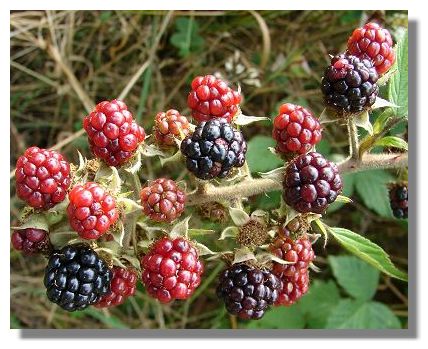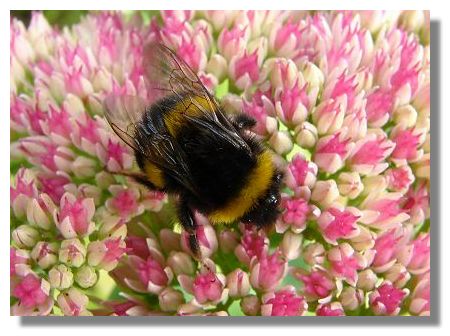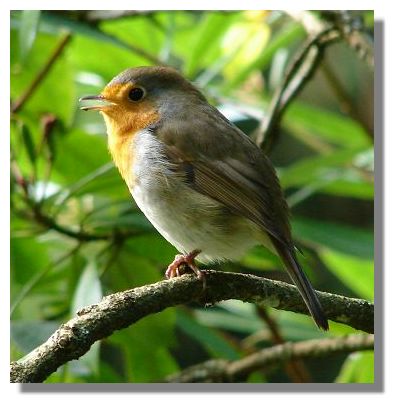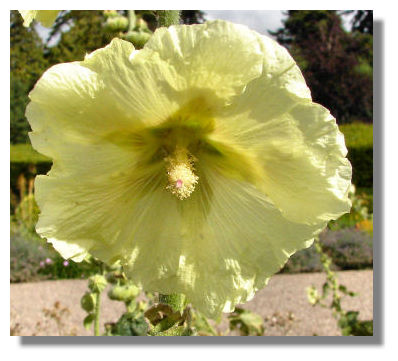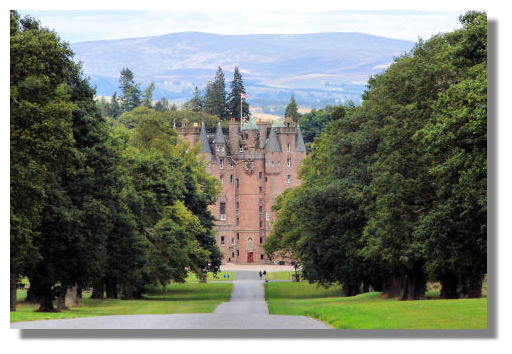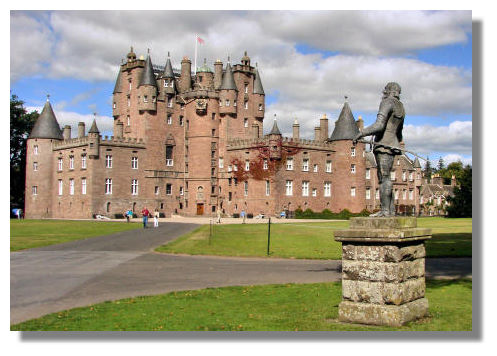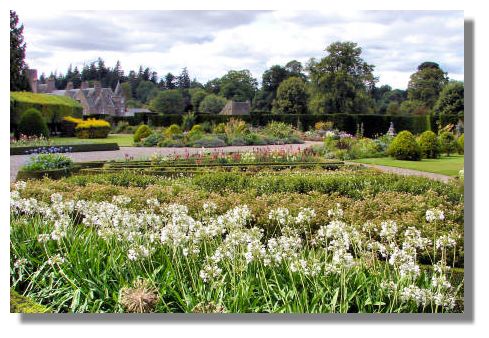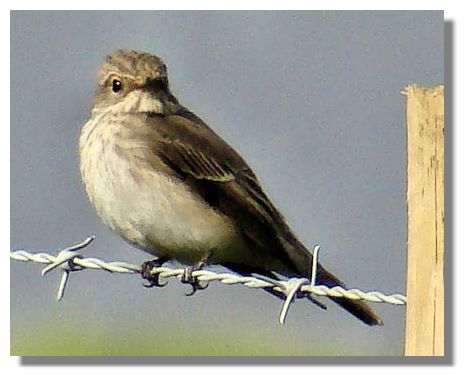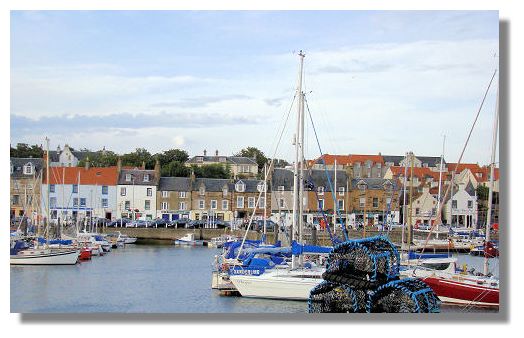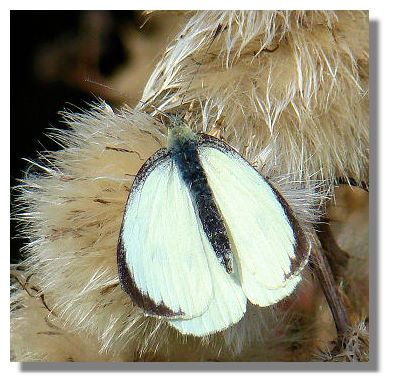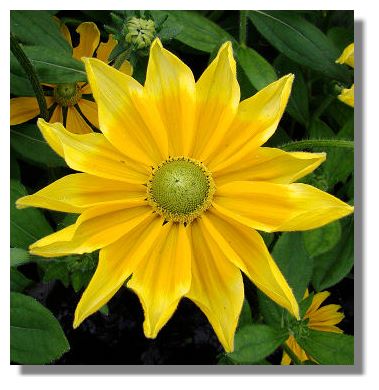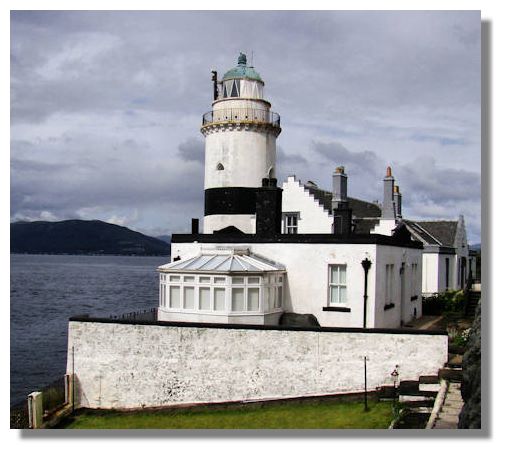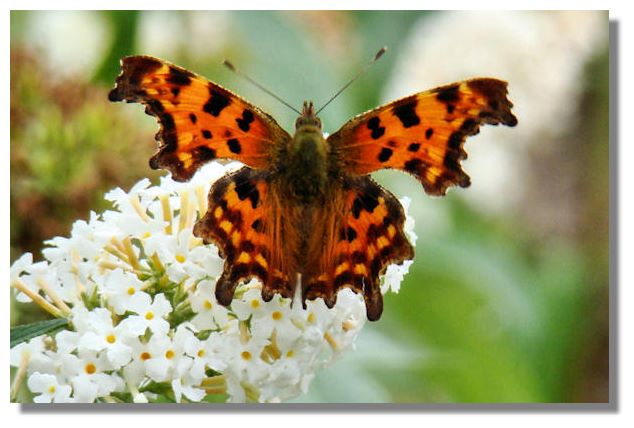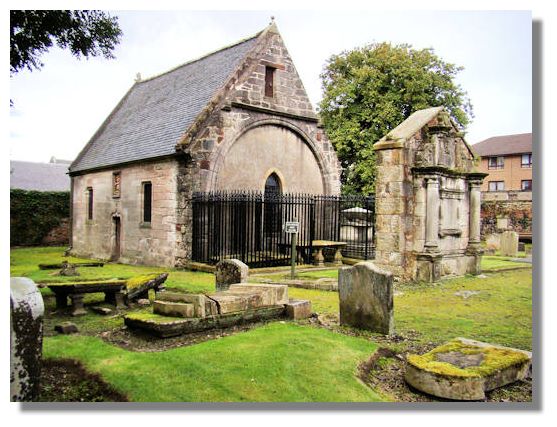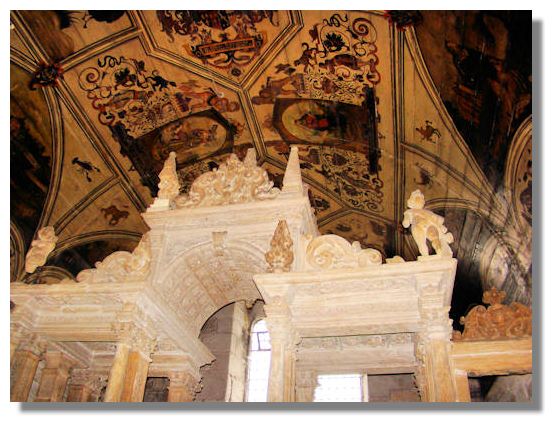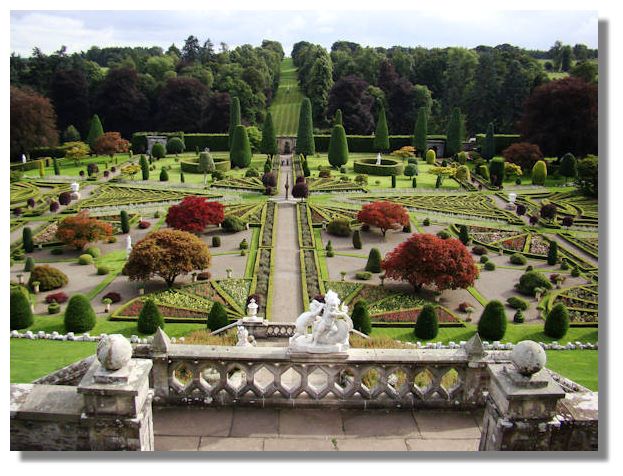Even in September there are still many roses putting on a show of perfect blooms. This lovely red one was growing in McCrosty Park in Crieff, Perthshire.
In Scotland the blackberry is more commonly known as bramble. Their bushes grow strongly along the hedgerows, producing their delicious berries. There are not so many people these days collecting the brambles to make home-made jelly - but I can assure you that some of those ripe berries disappeared soon after the photo was taken!
The Sedum plant comes into flower in the autumn/fall - indeed, one popular garden variety is Sedum "Autumn Joy". Bees and butterflies are attracted to Sedum too - this bee was too busy to notice the camera inches from its back!
This Robin first attracted my attention in McCrosty Park in Crieff by singing lustily. Although he kept a watchful eye on me, he continued with his chorus even when I tried to get closer with the camera.
Hollyhocks come in a range of different colours, growing in some cases to a height of ten feet and with individual flowers more than four inches across. This pale yellow example was photographed growing in the Italian Garden at Glamis Castle.
Many Scottish castles have long drive-ways leading to them - designed in the days of horse and carriage to impress visitors. In the days of the motor car, we may travel along them more quickly - but the route still produces a strong impression. This photo was taken well down the main access to Glamis Castle in Angus, showing the hills rising behind.
Looking like a Walt Disney icing-sugar encrusted fairy-tale, Glamis Castle was originally a 14th century keep which has been extended extensively over the years. In the 15th century, the lands were held by Sir John Lyon, Chancellor of Scotland who married the daughter of King Robert II. The castle is still held by the Lyon family, now elevated to the Earls of Strathmore and Kinghorne. The 9th Earl became a Bowes-Lyon when he married a Yorkshire heiress. The late Queen Elizabeth the Queen Mother came from this family. The statue in the foreground of this picture is of King Charles I.
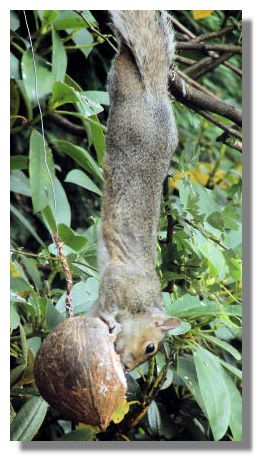
Regular readers of this feature will know about my constant battle to ensure that it is the birds and not the local grey squirrels that benefit from the nuts and seeds put out each day. But I knew that there was no way of defending the coconut filled with peanut fat and seeds and accepted that "Sammy" would get his share - while showing off his acrobatic prowess!
The Italian Garden at Glamis Castle has an air of serenity with lots of pastel colours and formal fan-shaped parterres, surrounded by yew hedges. The entrance gates commemorate the 80th birthday of the late Queen Mother - when they were put up, nobody knew that she live to be over 100.
The small, closely-packed flower heads of this Achillea in the garden at Glamis Castle is attractive to bees and wasps - such as the one in this photo, which merges very well with the colours of the Achillea.
Spotted Flycatchers can be found in most parts of Britain but their numbers declined by 78% between 1970 and 1998, so they are not often seen. Distinguishing it from other birds of a similar size and colouring can sometimes be difficult, but their habit of sitting on a favourite fence, flying off when they spot an insect to catch and returning to the same perch is often a give-away.
The harbour at Anstruther in the East Neuk of Fife is still a base for a few commercial fishing boats, but most of the craft moored here these days are leisure craft owned by weekend and casual sailors.
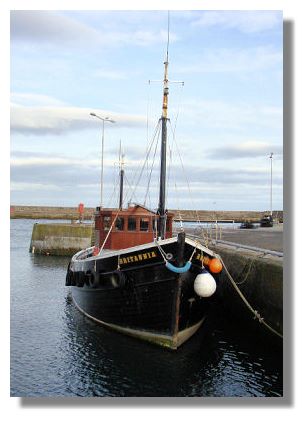
This fishing vessel "Britannia" was built at Buckie in Moray, north-east Scotland, in 1952. She worked around the coast of Scotland and is now recorded in the National Register of Historic Vessels database which contains information about all surviving historic vessels in the United Kingdom.
When they are darting around gardens and the countryside, it is sometimes difficult to distinguish between the various varieties of white butterflies. But when at rest (on the seeds of thistles, as in this photograph) the black markings on the wings confirm that this is a "Large White" rather than the more numerous "Small White" variety. There is also a "Green Veined White" which has these distinguishing markings on the underside of its wings.
Shining out like a beacon, this Rudbeckia in the walled garden at Cambo Estate responded to the warmer weather and greater amount of sunshine this week.
With its long shoreline, Scotland has many lighthouses, some of them with many stories to tell. The Cloch lighthouse is on the shore of the Firth of Clyde, at the point where the river turns from flowing west to a southerly direction into the estuary and then the open sea. It was thus a well-known landmark for many who left Scotland to emigrate to around the world - and a welcome sight for travellers returning to Scotland. The name Cloch (you need to be a Scot - or maybe German - to be able to get the "och" properly!) comes from the Gaelic word for stone. It was built in 1797 and was partly the work of Robert Stevenson of the well-known lighthouse-designing and novel-writing family. It warned ships of The Gantocks, a dangerous rocky reef directly west of the point.
Over the last few years I've managed to get photographs of Comma butterflies by travelling over to the east of Scotland where they have been seen increasingly in Fife, Angus and in areas around Edinburgh. But it was a great surprise to find one almost on my doorstep in Drumpellier Country Park in North Lanarkshire. This public park has been much improved in recent years and a group of white-flowering buddleja was planted in a garden area. Common garden butterflies have found there way there - and so did this Comma. Until recently, the Comma had been largely confined to southern England.
The building seen here in the old churchyard in Largs, Ayrshire, is known as the Skelmorlie Aisle. It was added to the local parish church in 1636 by a local landowner, Sir Robert Montgomerie of Skelmorlie (a village further along the coast from Largs). It was created as a burying place for Sir Robert and his wife Margaret. Most of the church was demolished in 1802 but fortunately the Skelmorlie Aisle was retained - see the picture below to understand why!
The Skelmorlie Aisle may not be all that large, but Sir Robert Montgomerie created a richly carved Renaissance canopied tomb in undressed marble above the burial-vault entrance. It reaches almost to the roof and nearly touches the timber arched ceiling, which was richly painted with rustic scenes, signs of the zodiac, quotations from the bible - and the several panels with the Montgomerie coat of arms. Even though the paintings were applied in 1638 (signed by the painter, J S Stalker), they have survived well to the present day.
From being buildings of defence and security, castles gradually became places to impress visitors - and Drummond Castle in Perthshire, accessed via a mile-long avenue of over 300 beech trees still does that today. And so do the formal gardens below the castle, terraces and steps. The gardens at Drummond Castle have a long history - there are records of Lord Drummond sending cherries to King James IV in 1508 and there was a substantial formal garden early in the 17th century. A later design by George Penrose Kennedy was prepared in 1838 and when Queen Victoria and Prince Albert visited the Drummonds in 1842, it was this layout which she saw. It is broadly this plan which is in place today, though with wider range of plant types (thanks to the many Victorian plant hunters). The leaves of the acer and the roses and antirrhinum in the flower beds create a riot of colour at this time of year.
If you want to look back at other editions of these photos of Scotland week by week, there is an Index Page
